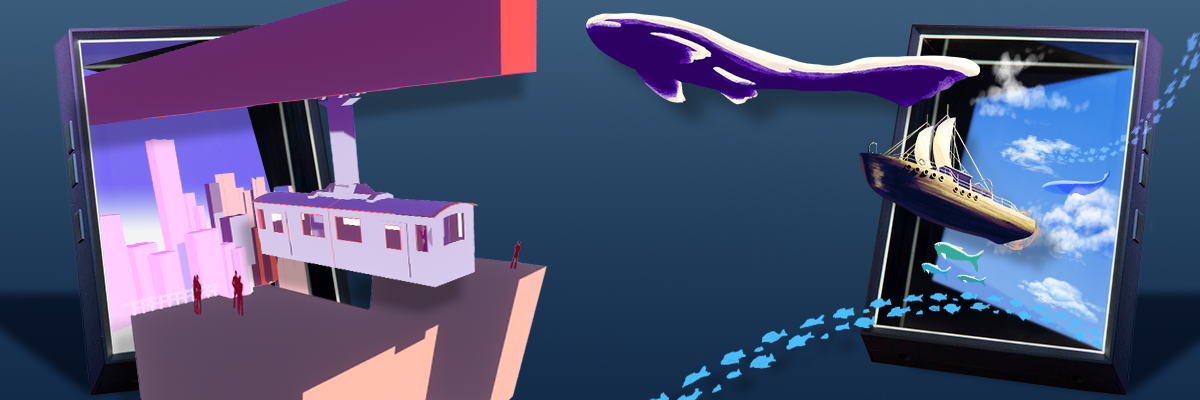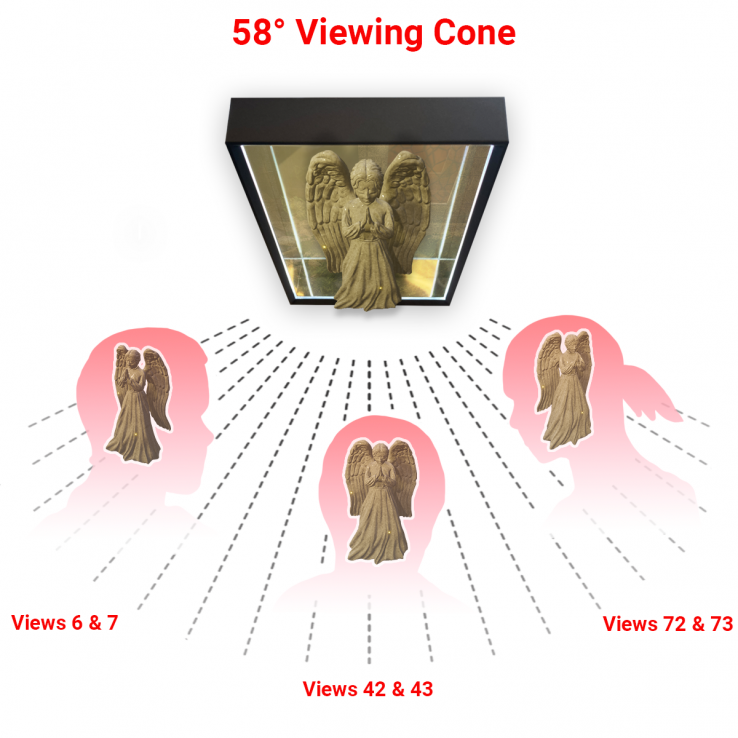Showcasing Student Creativity via Holograms
To exhibit student and campus community creativity, the Libraries' Virtual Reality staff have utilized 3D digital displays (or 'holograms') within our buildings. These light field displays allow a better understanding of the creativity, scholarship, and interaction possible via natively 3D media.

Overview
This project incorporated a new manner of physical display within the Libraries' showcase spaces: Light Field Displays. This emerging technology allows viewers to perceive the tridimensionality and depth of digital models, scenes, and interactive content without need for a virtual reality headset. These 'hologram' displays are valuable because:
- they're intuitive to observe and interact with,
- multiple viewers can observe the media simultaneously, and
- the standalone display devices have the capacity for user interaction and responsiveness.
3D-native media is more and more common within curricular and industrial applications. Suitable displays allow the Libraries to showcase compelling work like these student-made examples (all of which are pulled from our representative hologram showcase album):
Hover or slide over the image to view multiple angles
How We Did It
Exploration
RJ Washington & Jeff Wilkinson, students working in the Libraries' Virtual Reality Studio, experimented with relevant developer documentation and design standards for the new Looking Glass Portrait light field display. With the aid of online developer communities, student peers, and staff, RJ and Jeff formalized their understanding and summary of which techniques presented best on this new display standard.

Creation
Utilizing an array of digital media tools and development suites, our team created and consolidated an album of 14 compelling holograms. Specific attention was dedicated to working within the most widely adopted and most representational set of creator tools to mirror our campus community's preferences.

Exhibition
The consolidated album was installed onto Looking Glass Portrait displays to run in 'standalone' mode without the aid of an additional desktop computer. This version of the installation was tested for stability and usability through informal demonstrations at campus meetups and to visitors of the VR Studio, with the creators observing these demonstrations and iterating based on user impressions. Finally, in August 2022, Looking Glass Portraits were installed in the Lawrence and Ella Apple Technology Showcase as well as the Innovation Studio.
Team
 Ian BoydFormer University Library Specialist
Ian BoydFormer University Library Specialist Colin KeenanExperiential Learning Services Librarian
Colin KeenanExperiential Learning Services Librarian

